Journey to Gabon June 2008.
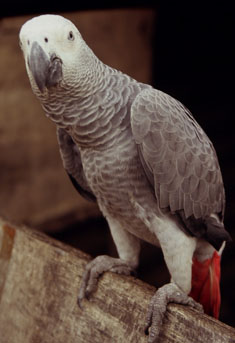
Gabon, in contrast to Sierra Leone, is a country which is still eighty five per forested and from the forests of this Central West African nation I was to travel into three of the nations that form the Congo basin, the world’s second green lung.
I arrived by air on the 7th of June and walked with difficulty from Libreville international airport under the weight of my baggage to a beach side hotel by the name of Tropicana.
“Bonjour mon papa, vien, vien vien, don moi un casslte bier sans glace, he mon papa je connais vous bien”. “Lest le pete parce que elle est un grand bande”, said the waiter as I was served morning coffee on the terrace at 6.30 in the morning, the young girl was a part of a group of youths that had been partying all night on the beach and I, as a foreigner, posed as a potential well heeled customer, a newcomer ad a lone traveller.
After morning breakfast I left the over priced hotel and went in search of the more affordable Catholic mission which lay 3 kilometres away, situated next to the vibrant markets of Mon Boit. Libreville the capital of Gabon is probably the most expensive capital city in Africa and the daily cost of living here was as a foreigner even more expensive than my daily existence in London.
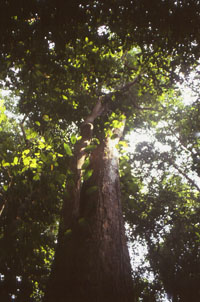 The mission was clean and kept spotless but the Congolese pastor that ran the mission was a difficult and awkward character who made a point in crudely demanding cash payment every morning. Pastor Pascal rarely smiled and had no time for frivolous talk and spent his day either in his high powered air conditioned office or patrolling the grounds of the neatly kept mission. After a week in Libreville I finally found a vehicle travelling to the central forests of Waka and the thought of finally journeying to the heart of this equatorial nation’s forests not only uplifted my spirits but energised my reasons for having come to the world’s second green lung, a journey begun in the small West African nation of Sierra Leone. Libreville is a small capital city by African standards and has a population of officially 700,000 inhabitants and as the 4×4 vehicle exited the capital the forests began to appear as the car sped along at high speed in the direction of a central town made famous by a Swiss Missionary known as Albert Switeser who had originally settled in Lambourene in the year 1913 and was to remain in Gabon working as a doctor for the next 50 years.
The mission was clean and kept spotless but the Congolese pastor that ran the mission was a difficult and awkward character who made a point in crudely demanding cash payment every morning. Pastor Pascal rarely smiled and had no time for frivolous talk and spent his day either in his high powered air conditioned office or patrolling the grounds of the neatly kept mission. After a week in Libreville I finally found a vehicle travelling to the central forests of Waka and the thought of finally journeying to the heart of this equatorial nation’s forests not only uplifted my spirits but energised my reasons for having come to the world’s second green lung, a journey begun in the small West African nation of Sierra Leone. Libreville is a small capital city by African standards and has a population of officially 700,000 inhabitants and as the 4×4 vehicle exited the capital the forests began to appear as the car sped along at high speed in the direction of a central town made famous by a Swiss Missionary known as Albert Switeser who had originally settled in Lambourene in the year 1913 and was to remain in Gabon working as a doctor for the next 50 years.
“Chauffer desaund ler voiuture” demanded the Chandam at the police barrier before entering the spacious laid out town besides a large flowing river; Lamborene has a chaotic ambiance and after lunching in a local restaurant that had crocodile, antelopes, monkeys and boas on the menu the vehicle once more sped off in the direction of a small hamlet by the name of Sindara and here I was to begin to witness the first evidence of the logging trade.
Prir to my arrival in Gabon I 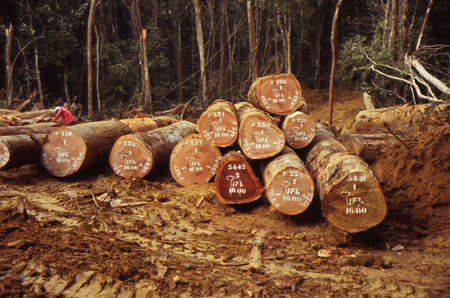 have contacted a conservation organisation in New York; this was an organisation that is concerned with the preservation of the biodiversity of the Congo basin. World Conservation Society has offices in Libreville which I had visited on a number of occasions during the week I had spent in Libreville and it was WCS that had assisted me in finding transport to the forests of Central Gabon. From the river banks of Sindara I took a ferry to the other side of the river where I was to lodge the night with an employee of the botanical society of Gabon.
have contacted a conservation organisation in New York; this was an organisation that is concerned with the preservation of the biodiversity of the Congo basin. World Conservation Society has offices in Libreville which I had visited on a number of occasions during the week I had spent in Libreville and it was WCS that had assisted me in finding transport to the forests of Central Gabon. From the river banks of Sindara I took a ferry to the other side of the river where I was to lodge the night with an employee of the botanical society of Gabon.
The forested areas of Gabon are plagued with a fly commonly referred to as the Fourou; this is a fly that attacks the exposed flesh of humans during the cool periods of the morning and evening hours and I soon found myself itching profusely from being constantly bitten by this almost unseen nuisance. The following morning I was to meet a Malaysian logger who had parked his vehicle on the banks of the river where he viewed the vast stacks of Oukoume logs pilled on the banks of the river awaiting a barge that would float these tropical timbers down river to an island known as Port Gentile on the Atlantic coast south of Libreville. The Malaysian driver of the vehicle was a clean shaven man by the name of Alex and after a short phone call to his boss in Libreville I was granted an opportunity to visit the logging camp of a Malaysian timber company known as IFL.
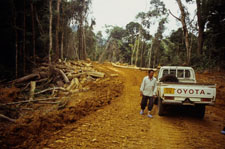 The journey to the timber company’s camp was to take an hour and a half and it was here that I would spend a week filming and interviewing the operations of and the various workers of IFL. The logging concessions of IFL were in the heart of the forests of Waka and situated next to the national park of the same name. The landscape of this region was of vast rolling forested hills as far as the eye could see and for the most part I found myself alone after the various Gabonese and a hand full of Senegalese and Indonesians left early in the morning to various forests locations deep in the surrounding bush.
The journey to the timber company’s camp was to take an hour and a half and it was here that I would spend a week filming and interviewing the operations of and the various workers of IFL. The logging concessions of IFL were in the heart of the forests of Waka and situated next to the national park of the same name. The landscape of this region was of vast rolling forested hills as far as the eye could see and for the most part I found myself alone after the various Gabonese and a hand full of Senegalese and Indonesians left early in the morning to various forests locations deep in the surrounding bush.
Wildlife with the exceptions of birds was rare to encounter and the endless forests had a virtually static appearance except with the occasional down pour or rain and morning mist. During the evenings I spent my time in a common room with groups of Indonesian loggers who passed there entire evenings watching music videos of Michael Jackson, Chuck Norris and other previous super stars. These foreign workers were from regions of Indonesia where work was scarce and most of these men were in Gabon on two year contracts and commenced work from six in the morning to six in the evening and worked seven days a week. Gabon is a sparsely inhabited nation and travelling through this forested nation one can’t help but fail to notice how thinly inhabited this country is. and Waka has virtually no inhabitants and during the day periods the camp where I was to lodge was virtually deserted, a solitary and lonely location surrounded by thick and endless equatorial forests. Many of Gabon’s logging concessions were initially run by French companies which have since been bought by Malaysia and Chinese timber merchants.
After a week in the Waka forests I was to return to the river side village opposite Sindara and eventually travelled back to Lamborene and onto Libreville. My time back in Libreville was spent researching other locations to visit at the offices of the WCS surrounded by various researches that were mostly American wildlife conservationists and for the most part seemed to be oblivious to the surroundings of the urban environment of Africa. Their world was a world of academia and their daily concern was conservation but the daily reality of most Africans was the need for economic survival. but I was fortunate enough to find myself resident near to the urban city market of Mon Boit and increasingly I was to spend more time getting to know the many different market workers and traders. Many, if not the majority of the market traders, were in fact Nigerians of Ibo origin and there were also large numbers of Cameroonians, Senegalese, Malians, and Ghanaians. There were also large communities of Equatorial Guineans and these markets were the true vibrant heart of this boisterous city.
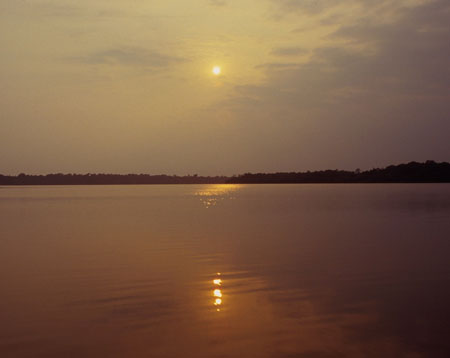
Gabon’s economy is largely driven by petroleum and gas and a large portion of the country’s population are in fact from other parts of this sub region.
After the sterile academic offices and the vibrant crowded markets of Libreville I chose to travel south to a region near to the border with Congo Brazzaville a town by the name of Myumba.
Not only was the daily life of Gabon expensive but transport was also the same price as in Europe, only more crowded. I was to pay 27,000 CFA to the town of Tchibanga across a landscape of forests and the occasional savannah, the landscape as with much of Gabon was sparsely inhabited and most towns were few and far between.
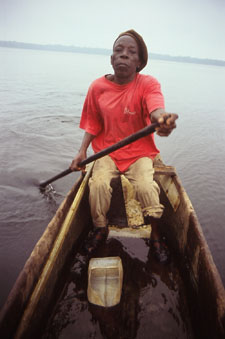 Mayumba lay on the southern Atlantic shore line of this under populated equatorial country and south of this small town is situated a national park that covers not only the savannahs and forests but also the Atlantic shores where in the months of August whales abound and in June and July large colonies of turtles arrive. I was also fortunate enough during the course of my time in this southern region to come across a group of gorillas but was only able to see these magnificent primates from the rear as they abruptly made there way into the thick forests that surrounded the savannah. On other occasions I was to encounter buffalos and on one particular occasion I accidentally came across a solitary buffalo on the Atlantic beach. One noticeable problem along this coast line was the vast amount of rubbish including syringes, broken bottles and vast amounts of plastic sandals and other items of abandoned rubbish. The large amounts of discarded rubbish would indicate that this was the waste of a large regional city, perhaps Pointe Noire, across the border in what is Congo Brazzaville.
Mayumba lay on the southern Atlantic shore line of this under populated equatorial country and south of this small town is situated a national park that covers not only the savannahs and forests but also the Atlantic shores where in the months of August whales abound and in June and July large colonies of turtles arrive. I was also fortunate enough during the course of my time in this southern region to come across a group of gorillas but was only able to see these magnificent primates from the rear as they abruptly made there way into the thick forests that surrounded the savannah. On other occasions I was to encounter buffalos and on one particular occasion I accidentally came across a solitary buffalo on the Atlantic beach. One noticeable problem along this coast line was the vast amount of rubbish including syringes, broken bottles and vast amounts of plastic sandals and other items of abandoned rubbish. The large amounts of discarded rubbish would indicate that this was the waste of a large regional city, perhaps Pointe Noire, across the border in what is Congo Brazzaville.
One of the major problems along this southern Atlantic coast was that of illegal fishing trawlers that originate from China; these trawlers are the cause of serious depletion of the rich marine life of this coastal region. As with other coastal regions of Africa these coastal areas are targeted because of weak policing and corruption within the high echelons of government departments. Much of Africa’s rich natural resources are now in greater demand than at any other period in human history and with the new emerging super powers from Asia these resources are now being actively targeted by China.
The director of the Mayumba national park was somewhat aloof who/and I found difficult to approach but I was eager to see and to learn something about this region and its rich biodiversity. During my time in Mayumba I was to visit the park and the lagoon that laid behind the forests and the savannahs of the peninsula on which the small town of Mayumba is found. On one occasion I arranged to make a four day visit to the park in the company of an Eco guard by the name of Swami, a military orientated middle age man who marched through the bush and gave commands as though we were on a military expedition. On occasions when we came across buffalos I was ordered not to film but to hide in the tall savannah grasses which I refused to do, after all I had come to film and not for a military expedition. On our first day I soon realised that Swami in fact needed to wear glasses and as he squinted at the view screen of my camera I was able to persuade the Eco guard to try on my glasses to which he was to express surprise at how his vision suddenly improved. A day before we left the park as we hiked through a patch of savannah Swami turned and…
The full journal is included in the new book which will soon be for sale online and in select book stores.
